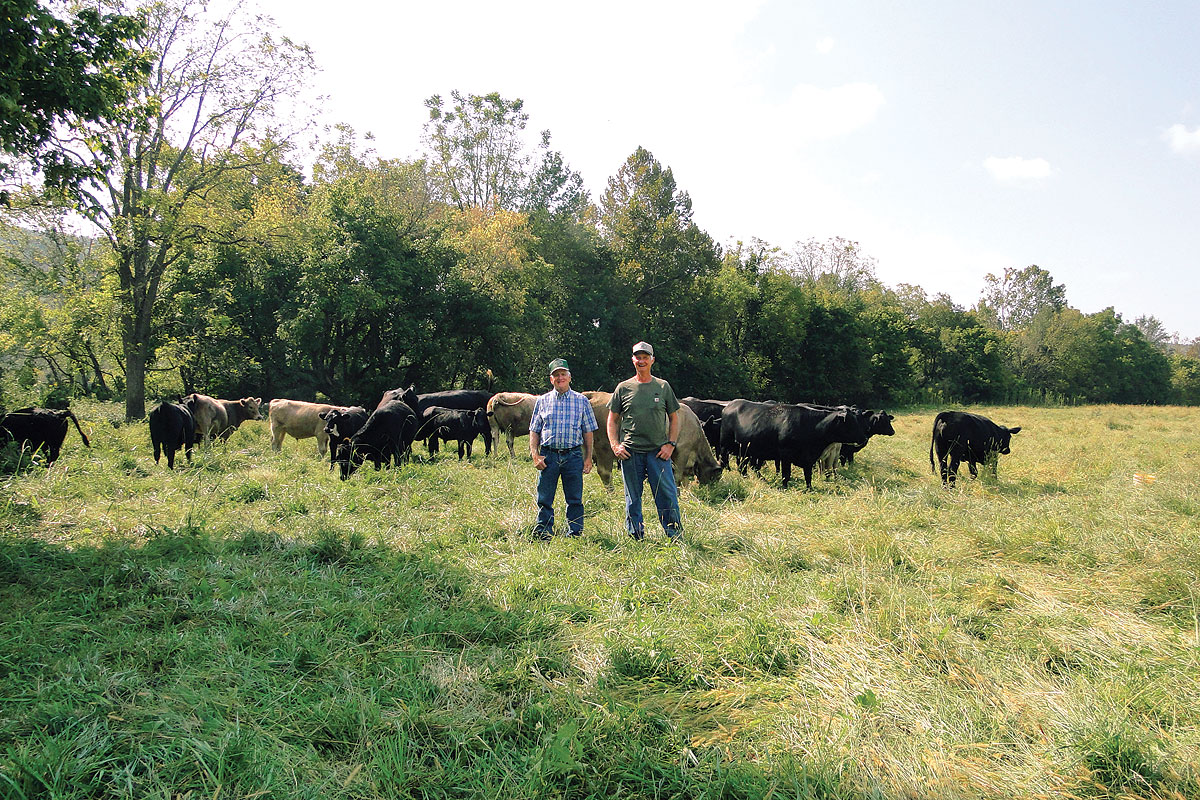
Planning for retirement entails a financial or lifestyle plan; or it contains both. The desired choice is one that does not involve more years of hard work. The hopeful aspect of retirement is that there will be enough funds to continue the current lifestyle or to make a better one. Retirement takes preparation whether it is through an employment plan or years of saving, reaped of hard work. Most farmers and ranchers know the hard labor and countless hours involved in maintaining a successful operation. Choosing farming or ranching as a retirement choice can be lucrative or ultimately just hard work, or again – it can be both.
Mike and Vicki Russell of Leach, Okla., have paralleled their full time jobs to what they have chosen as their retirement plan, raising docile crop. “We chose the Murray Grey cattle because of their personalities and ease of handling. I am not getting younger and cannot run after the cattle or run from them. These creatures are just the easiest to take care of, especially as I get older. Everyone has a favorite breed and this is the best breed for us as we head towards retirement. They are extremely friendly. If they see you, they will come to you. All of our animals are like that. I have had other breeds and have been pinned under a truck by them. It was too dangerous to manage. I really like the nature of the Murray Grey,” said Mike.
The Murray Grey cattle originated in Australia in 1905 and gently made its way to the United States in 1969. Their grey color allowed them to tolerate the heat longer and avoid certain cancers. Carole Brown, secretary of the Murray Grey International Association in Lawton, Okla., said, “This is a moderate-framed breed, easy calving, polled, propensity for docile nature and contains the tenderness gene. We have had Murray Greys since 1995 and it has been a very good choice for us.”
“The more you learn about what you eat, the more you will get scared. That is why we raise everything we use here. We have the registered Murray Grey cattle, a few Murray Grey cross heifers, a few Guernsey cows (for milk for our use), Boer goats, a LaMancha goat, draft horses, mules, high performance Quarter Horses, chickens and guineas. We finally got the heifer that we had been wanting from our Guernsey (Dolly Moo). We crossed Dolly Moo with one of our Murray Grey bulls. She is a lovely chocolate color with her mother’s long legs and head. We are so excited to have another dairy heifer. The Boer goats are raised and sold as 4-H or FFA show goats. Our goats provide our milk, butter, cheese, kefir and yogurt. Probiotics are very healthy for you. We also make soap and lotion from goat’s milk. We have a little bit of everything. We are still building our numbers so that we can retire one day without worry and do what we enjoy doing. Having a farm is part of that,” said Vicki.
One of the main goals that Mike and Vicki share is to raise awareness and increase the availability of Murray Grey cattle and their great genetics. The pliant nature of the Murray Grey makes transitioning from the workforce welcoming. “We cannot wait to do this fulltime. As soon as we get off from work, we immediately get busy taking care of the ranch. Having purchased this property more than a few years back is going to continue to take work. I would like to do rotational grazing but still have to put up fences in order to do that. There is definitely a lot of work to do here. We just hope the weather favors us so we can maintain water and forage,” said Mike.
Their cattle will never see a feedlot as they strive to finish them on native pastures. If purchased feed is used, the deficiency arises from drought, ice storms or flooding. They never use steroids, artificial growth hormones or antibiotics. “All of our cattle are grass fed. If a steer gets sick or hurt and needs antibiotics, then they are pulled from our beef program and sold on another market,” added Vicki.
“The important thing we practice here is being sustainable. In addition to raising animals, we grow our own produce. We began planting in February and March and thought we lost our potatoes to the freeze because they appeared dead but they came back bigger, better and faster. We are already enjoying fresh asparagus, lettuce, bok choy, chard, radishes, onions, spinach, mustard greens and strawberries. Mike made raised beds that have seating areas all around it to make harvesting easier,” said Vicki.
Vicki concluded and Mike agreed, “With respect to raising the cattle crop, we will never figure it all out, but between the two of us, we have a lot of knowledge, enjoy what we do and hopefully will for many more years.”







